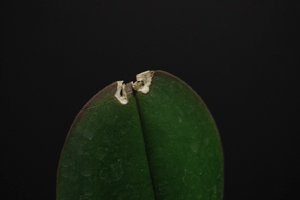 Phalaenopsis orchids are one of the hardiest types of orchids, and they can thrive under a wide range of environmental conditions. However, there are certain factors that can prevent these orchids from producing their beautiful blossoms, and even kill them.
Phalaenopsis orchids are one of the hardiest types of orchids, and they can thrive under a wide range of environmental conditions. However, there are certain factors that can prevent these orchids from producing their beautiful blossoms, and even kill them.
With proper pruning, a Phalaenopsis orchid can produce flowers on the same stem twice in one growing season. If the stem is pruned down to just above the second node after the first blooms fall, the orchid will bloom a second time. Failure to do so can prevent it from re-blooming.
Overly dry air and excess humidity can create problems that stop a Phalaenopsis orchid from producing blossoms. It needs 55% to 75% humidity to grow well. Additionally, a Phal will have trouble blooming if it is exposed to overly high temperatures at night. Make sure the night temperatures are 10 to 15 degrees lower than temperatures in the day. Other conditions that can affect your orchid’s ability to bloom are direct sunlight, insufficient water, and lack of fertilizer.
Scale insects and mealybugs are two types of pests that are commonly found in Phalaenopsis orchids. These pests feed on the leaves of your orchid, causing it to become weaker and less likely to bloom. Scale insects can cause serious damage to orchids by creating a habitat for a fungus called sooty mold.
Phalaenopsis orchids are also vulnerable to several bacterial and fungal diseases. Symptoms of orchid diseases include stunted and discolored leaves, discolored stem, weak growth, dieback, and failure to bloom. Severe infections can kill your orchid if they are not treated promptly.
You can find tips on how to trigger orchid reblooming in our FREE download.

Copyright Just Add Ice® Orchids 2023